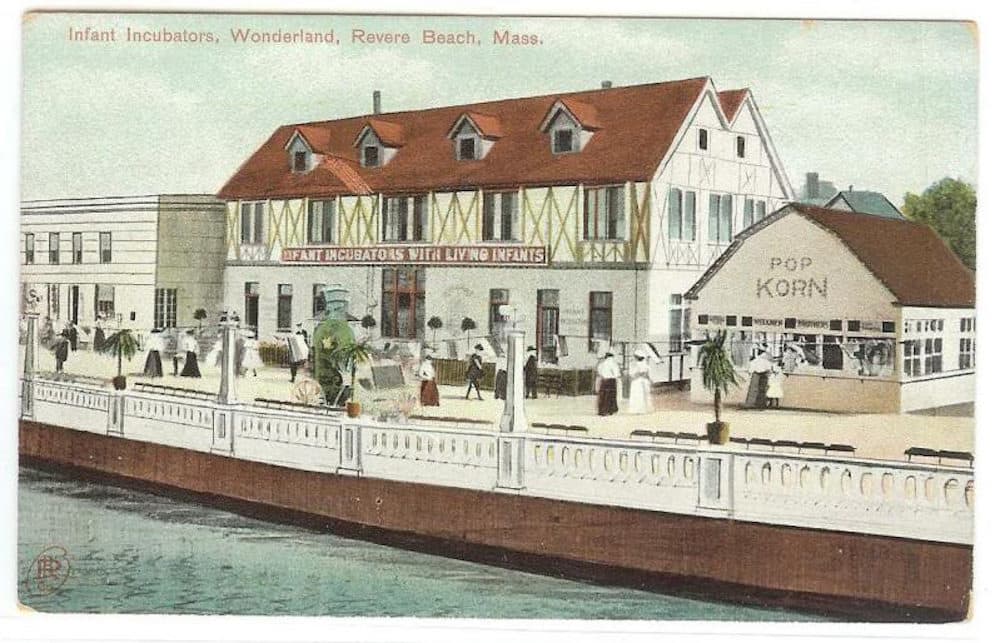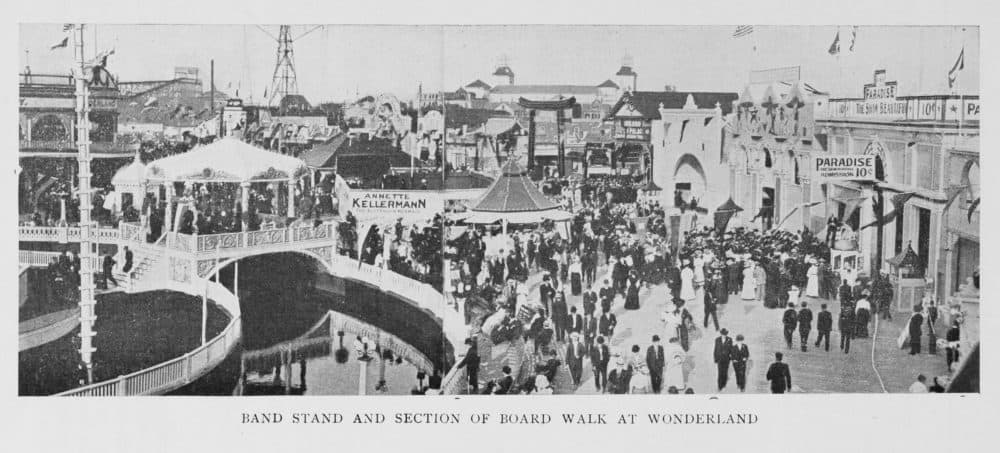Advertisement
Review
New Book 'Lost Wonderland' Sheds Light On Revere's Forgotten Amusement Park
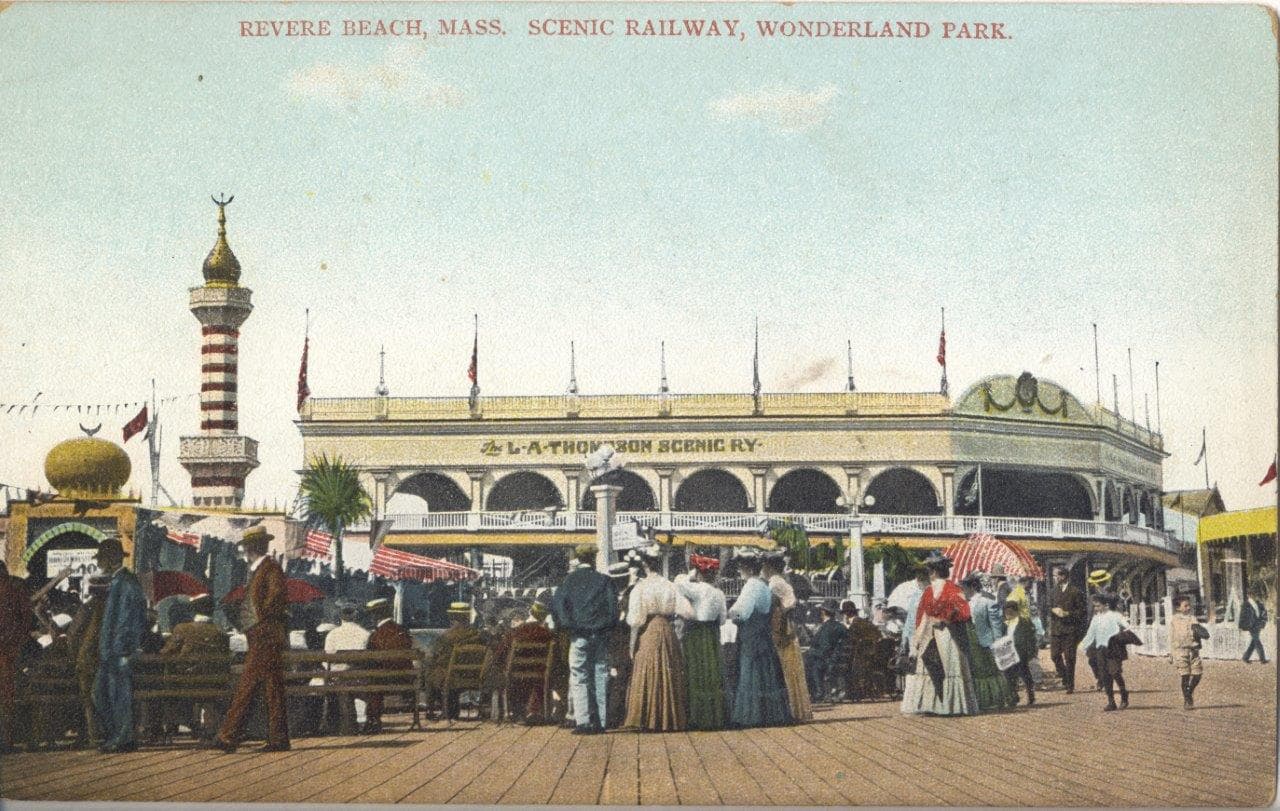
If you’ve ever stepped aboard the MBTA’s Blue Line, you’ve probably wondered why the final stop is named “Wonderland.” When it opened in 1954, the stop shared the name of the former Wonderland Greyhound Track and the Wonderland Ballroom — yet it was a short-lived amusement park from 1906 to 1910 in Revere, Massachusetts where all three locales derived their names. Wonderland was 25 acres of carnival rides, scenic railways, performances showcasing the abilities of humans and animals, and parades celebrating “Alice in Wonderland” and Cinderella decades before Disney would lay claim to them. “Lost Wonderland: The Brief and Brilliant Life of Boston’s Million Dollar Amusement Park” by Stephen R. Wilk sheds light on the forgotten park’s then state-of-the-art attractions, but also doesn’t shy away from condemning its large number of racist exhibitions.
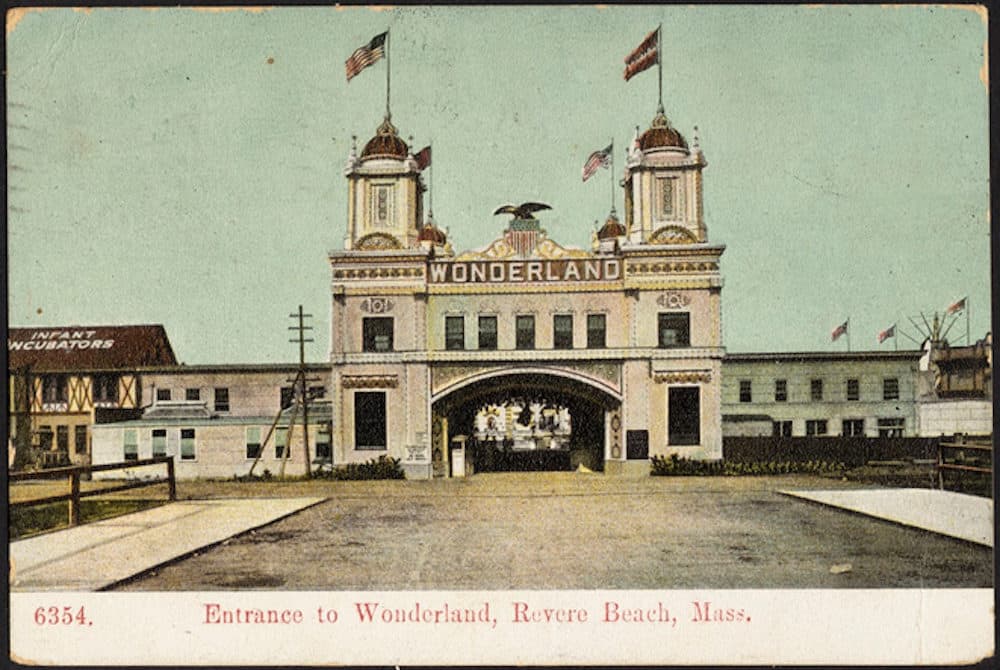
Wonderland was one of dozens of amusement parks that cropped up in major cities across the United States after Coney Island became famous for its three parks (Steeplechase Park, Luna Park, and Dreamland). The concept of a more permanent county fair was new and not many people had relevant experience, but Wonderland’s management gained the support of Harold Parker (a member of the Massachusetts Highway Department and Massachusetts Forestry Commission), Rodolphe L. Agassiz (president of 10 mining companies and the grandson of Louis Agassiz, the “father of glaciology”), and a variety of other board members with backgrounds in industries ranging from baking powder, railways and theater. The parcel of land bordered the Rumney Marsh and was therefore in danger of being flooded; an ominous beginning which would be the first in a history of tough breaks.
It’s interesting to read about amusement rides that were precursors to modern-day equivalents: “Shoot the Chutes” was similar to a log flume; “The Foolish House” aka the “House of Mirth” aka “House of Follies” were early names for a fun house; the Velvet Coaster lacked the big drops and sudden turns that are now standards of roller coasters — but were only just becoming popular in 1907; and the “Circle Swing” hasn’t changed that much in over 100 years.
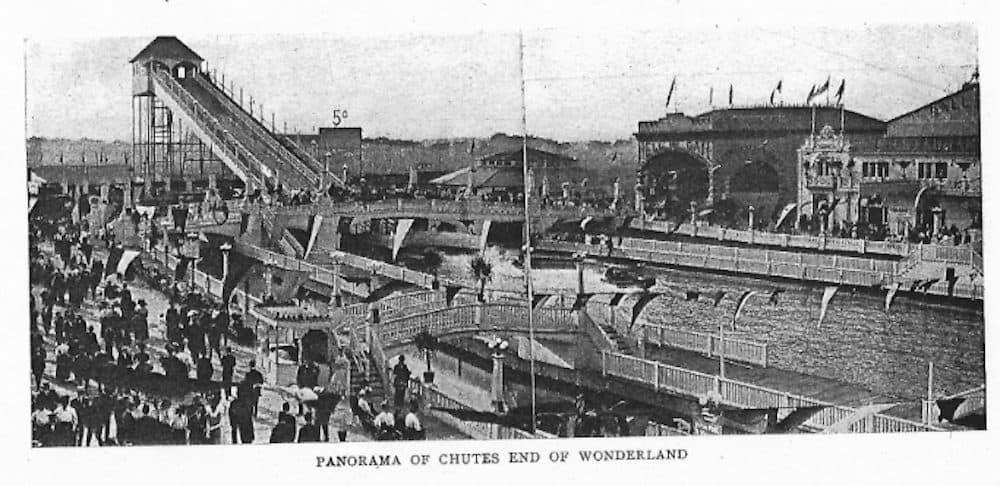
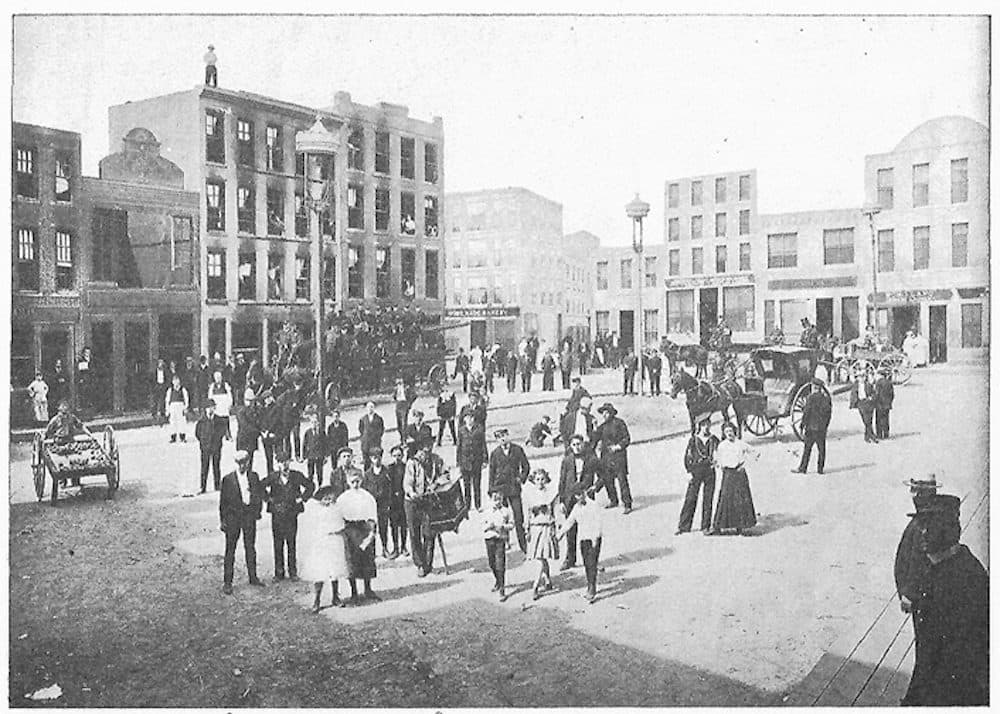
What’s more intriguing is to see what entertainments used to be considered novel. The “Fighting the Flames” show was a staple, where actors would flee from real fires in a pretend neighborhood while retired firefighters put out the flames. “The Fatal Wedding” was a show that would “marry” two volunteers from the audience, drape them in cloth, which would be pulled away to reveal the optical illusion of two skeletons in their place. Princess Trixie was an “educated” horse who was trained to read body language so she could spell, do basic arithmetic, read the time on a watch and give correct change from a cash register. Wonderland was also home to one of the Infant Incubator exhibits, a treatment for premature babies that Dr. Martin A. Couney sought to normalize.
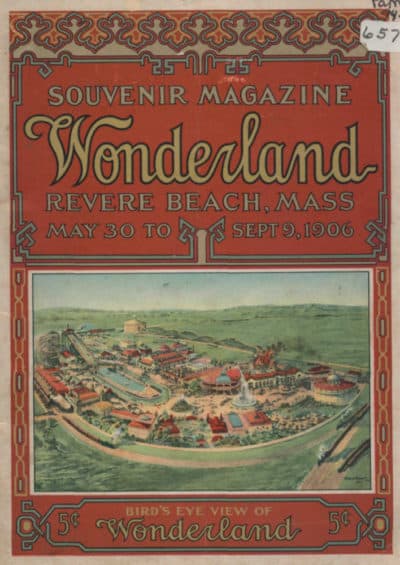
Even some lecturers had prolonged stints in the park, such as international long-distance swimmer Annette Kellerman (who would demonstrate 18 different dives, then talk about sensible bathing costumes for women, the health benefits of swimming and healthy eating), and Matthew Alexander Henson, a Black man who was on one of the earliest expeditions to the North Pole alongside Robert Peary. National Geographic Society would later dispute whether they made it all the way, but Henson had built the sledges, trained the dogs, learned to speak Inuit, took photographs and saved Peary’s life multiple times, all while getting pretty close to the Pole.
Yet for all these quaint exhibits, Wonderland has a more sinister history when it comes to its shows depicting non-white cultures. Programs named “The South Before the War,” “Darktown,” and a later adaptation of the “Fighting the Flames” show was what Wilk calls an "absurd gathering of racist clichés." Black actors were specifically brought in to depict the lives of enslaved people while white actors in blackface performed some of the more prominent roles. Members of the Apache, Sioux, Tuscarora and Cheyenne tribes agreed to playact in an "Indian Congress,” despite being portrayed as unintelligent and "savage," because it meant that white men were willing to pay them a wage.
Two walk-through exhibits exotified Eastern cultures: the “Beautiful Orient” depicted a Turkish bazaar and featured “muscle dancing” (now colloquially known as “belly dancing”), and American girls in Japanese costumes showcased the “Japanese Village,” a recreation of the interior of a Japanese home within a replica of Mount Fuji. In the park’s final year, they hired the little person named Chiquita — born Alize Espiridiona Cenda del Castillo in Mexico but forced to allege her identity as Cuban by her former manager — who spoke and sang in three different languages. Wilk acknowledges in the preface of “Lost Wonderland” that the language he cites in contemporary articles would be considered crude and offensive today; he points out in-text how such exhibits and language are harmful.
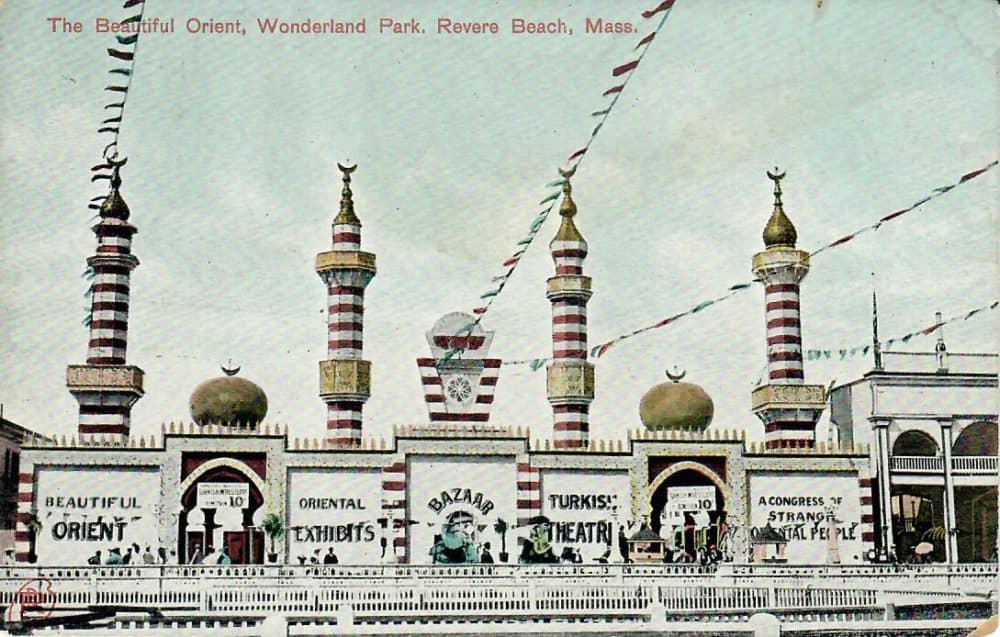
Had Wonderland been able to adapt with the times (and shed their racist programming), perhaps Revere Beach would have grown to be like Coney Island or one of the Jersey Shore boardwalks. As it was, Wonderland suffered due to competition from other small amusements that were closer to “the first public beach in America,” even though Wonderland was only a 15-minute walk away. Many of the inaugural years' attractions did not return the following year, and the financial Panic of 1907 led to the park operating at a loss in 1908. The brand-name shows and rides were too expensive to keep operating and Wonderland struggled to construct inexpensive attractions that drew in crowds. Wonderland closed its doors at the end of the 1910 season and slowly sold off its assets in 1911 and the years following.
“Lost Wonderland” immerses you in life at the turn of the 20th century. Wilk contrasts Wonderland’s operations with amusement parks across the country, highlights the personal histories and fascinating anecdotes of the key investors and performers, and cites some colorful reviews from a cranky contemporary journalist, all of which makes the history really pop off the page rather than feeling like some distant memory. Wilk also offers a much-needed 21st-century lens to talk about the cultural exhibits, but he also shares some encouraging contemporary anecdotes of instances where people were able to stand up for themselves. Next time you’re taking the pedestrian bridge from the Wonderland T stop, you’ll be able to imagine how it once led to a giant archway proclaiming “Wonderland” in large, blocky letters.
